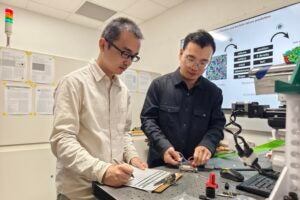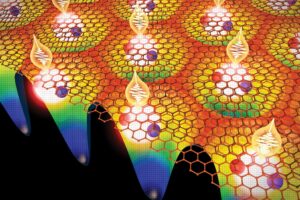Every moment, we’re swimming in a sea of electromagnetic radiation. Appliances, power lines, cellphones, Wi-Fi and a slew of other modern technologies emit microwaves that pass through, and interact with, our bodies.
As wireless technology continues to proliferate in our daily lives, anxiety builds about its dangers. Do cellphones cause cancer? Impact fertility? Affect pregnancies? Increase brain activity?
In 2009 the National Science Foundation (NSF) funded a five-year interdisciplinary study at The University of Texas at Austin to address the growing debate about the effects of microwave radiation. After two years, Electrical and Computer Engineering Assistant Professor Ali Yilmaz and his colleagues have built one of the highest-resolution electromagnetic human models to date: AustinMan. The model is helping to determine the effects of microwaves from wireless devices on the body.
“You have all these bright future pictures of connectedness and then all these scare stories telling you to turn off your cellphones,” said Yilmaz. “What are the effects of all these nearby wireless devices on us?”
Yilmaz has worked with his colleagues in the Electrical and Computer Engineering, Aerospace Engineering and Engineering Mechanics and Computer Science departments, the School of Biological Sciences and the Texas Advanced Computing Center to answer this question.



